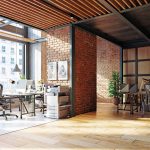Creating a Dynamic and Effective Learning Environment.
Creating a Dynamic and Effective Learning Environment.
The design of an education space has a significant impact on the learning experience of students. From the layout and furniture to the lighting and colour scheme, every aspect of the space contributes to the overall atmosphere and can influence students’ engagement and performance. Whether you’re an educator, administrator, or simply interested in the design of educational spaces, this post will provide valuable insights and inspiration for creating a dynamic and effective learning environment.
 When designing an education space, several key concepts should be considered in order to create an environment that is functional, comfortable, and conducive to learning. Some of the most important design concepts include:
When designing an education space, several key concepts should be considered in order to create an environment that is functional, comfortable, and conducive to learning. Some of the most important design concepts include:
Flexibility: Education spaces should be designed to be flexible in order to accommodate a variety of teaching styles and learning activities. This can include spaces that can be easily reconfigured, such as moveable walls, tables, and chairs.
 Technology: Technology plays an important role in modern education, and it is important to incorporate it into the design of the space. This can include things like high-speed internet, multimedia equipment, and interactive displays.
Technology: Technology plays an important role in modern education, and it is important to incorporate it into the design of the space. This can include things like high-speed internet, multimedia equipment, and interactive displays.
Collaboration: Many learning activities involve group work and collaboration, so it is important to design spaces that support this type of interaction. This can include spaces like group study rooms, collaboration zones, and shared workspaces.
Natural light: Exposure to natural light has been shown to have a positive impact on mood and learning, so it is important to incorporate large windows and skylights into the design of education spaces.
 Comfort: Comfort is an important factor in creating a positive learning environment, so it is important to design spaces that are temperature controlled, well-ventilated, and have comfortable seating and surfaces.
Comfort: Comfort is an important factor in creating a positive learning environment, so it is important to design spaces that are temperature controlled, well-ventilated, and have comfortable seating and surfaces.
Branding and identity: Education spaces should reflect the values, mission, and identity of the institution. This can be achieved through the use of colour, graphics, and other design elements that reinforce the brand of the institution.
Accessibility: Education spaces should be designed to be accessible to all students, including those with disabilities. This can include features like ramps, elevators, and accessible restrooms.
Sustainability: Sustainability is an important consideration in the design of education spaces, and it is important to incorporate elements like energy-efficient lighting, water conservation measures, and recycled materials into the design.
In conclusion, the design of an education space plays a crucial role in shaping students’ learning experience. Whether you’re designing a new space or renovating an existing one, taking the time to carefully consider the interior design can make a positive impact on the students who will use it. With the right combination of functionality, comfort, and inspiration, you can create a space that fosters creativity, collaboration, and academic achievement.







